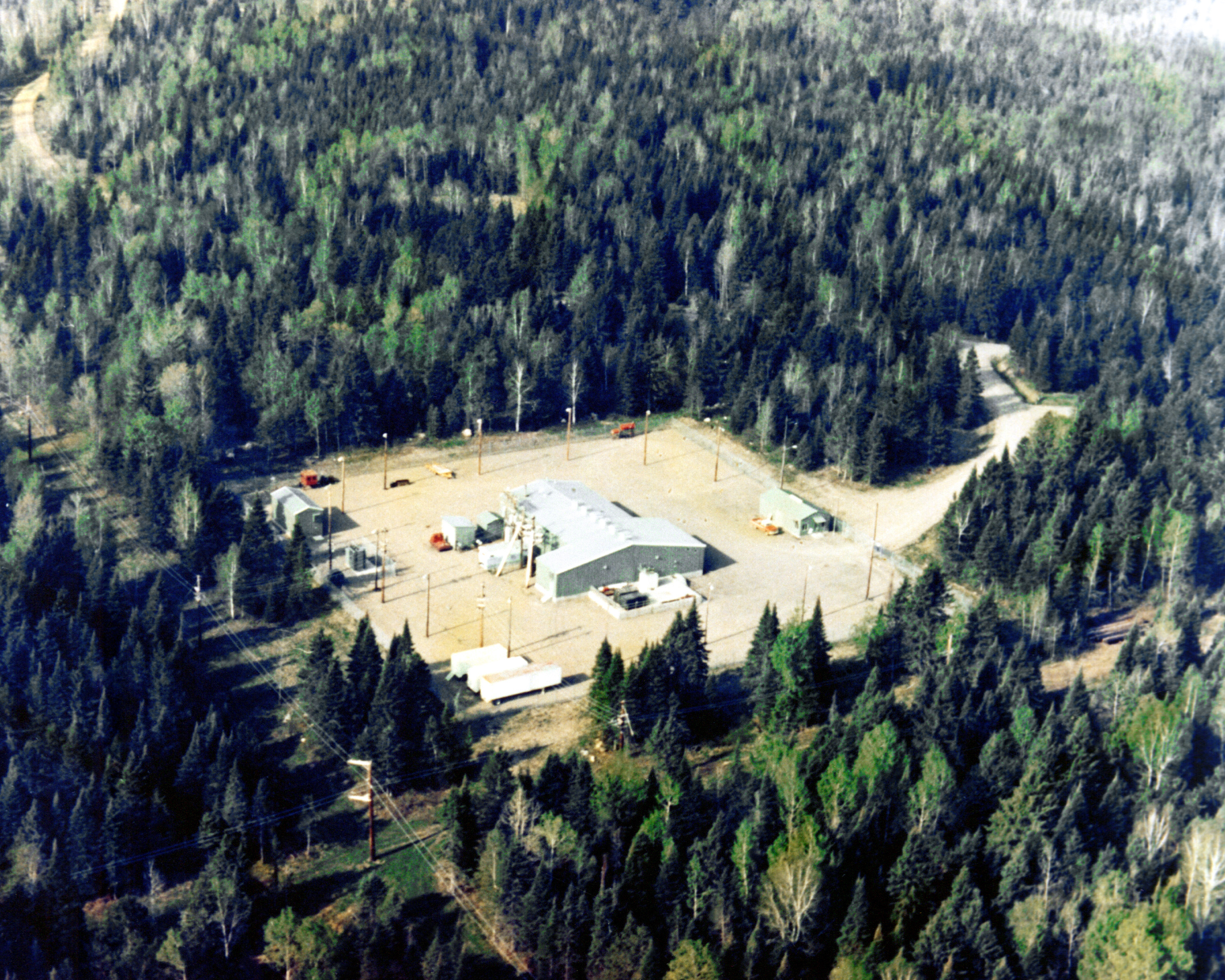
Extremely low frequency
Extremely low frequency (ELF) is the ITU designation[1] for electromagnetic radiation (radio waves) with frequencies from 3 to 30 Hz, and corresponding wavelengths of 100,000 to 10,000 kilometers, respectively.[2][3] In atmospheric science, an alternative definition is usually given, from 3 Hz to 3 kHz.[4][5] In the related magnetosphere science, the lower-frequency electromagnetic oscillations (pulsations occurring below ~3 Hz) are considered to lie in the ULF range, which is thus also defined differently from the ITU radio bands.
ELF radio waves are generated by lightning and natural disturbances in Earth's magnetic field, so they are a subject of research by atmospheric scientists. Because of the difficulty of building antennas that can radiate such long waves, ELF have been used in only a very few human-made communication systems. ELF waves can penetrate seawater, which makes them useful in communication with submarines, and a few nations have built military ELF transmitters to transmit signals to their submerged submarines, consisting of huge grounded wire antennas (ground dipoles) 15–60 km (9–37 mi) long driven by transmitters producing megawatts of power. The United States, Russia, India, and China are the only countries known to have constructed these ELF communication facilities.[6][7][8][9][10][11][12][13] The U.S. facilities were used between 1985 and 2004 but are now decommissioned.[9]
Alternative definitions[edit]
ELF is a subradio frequency.[14] Some medical peer reviewed journal articles refer to ELF in the context of "extremely low frequency (ELF) magnetic fields (MF)" with frequencies of 50 Hz[15] and 50–80 Hz.[16] United States Government agencies, such as NASA, describe ELF as non-ionizing radiation with frequencies between 0 and 300 Hz.[14] The World Health Organization (WHO) have used ELF to refer to the concept of "extremely low frequency (ELF) electric and magnetic fields (EMF)".[17] The WHO also stated that at frequencies between 0 and 300 Hz, "the wavelengths in air are very long (6,000 km (3,700 mi) at 50 Hz and 5,000 km (3,100 mi) at 60 Hz), and, in practical situations, the electric and magnetic fields act independently of one another and are measured separately".[17]
Other uses[edit]
Transmitters in the 22 Hz range are also used in pipeline maintenance, or pigging. The signal is generated as an alternating magnetic field, and the transmitter is mounted to, or to part of, the "pig", the cleaning device inserted into the pipe. The pig is pushed through a mostly metal pipeline. The ELF signal can be detected through the metal, allowing its location to be detected by receivers located outside of the pipe.[30] It is used to check whether a pig has passed a certain location or to locate a stuck pig.
Some radio hobbyists record ELF signals using antennas ranging in size from 18-inch active antennas up to several thousand feet in length taking advantage of fences, highway guard rails, and even decommissioned railroad tracks. They then replay them at higher speeds to more easily observe natural low-frequency fluctuations in the Earth's electromagnetic field. Increasing the playback speed increases the pitch, bringing the tone into the audio frequency range.
Since the 2000s, very low frequencies have been used successfully at sea for oil geophysical prospecting.[31]
Natural sources[edit]
Naturally occurring ELF waves are present on Earth, resonating in the region between ionosphere and surface seen in lightning strikes that make electrons in the atmosphere oscillate.[32] Although signals generated from lightning discharges were predominantly VLF, it was found that an observable ELF component (slow tail) followed the VLF component in almost all cases.[33] Also, the fundamental mode of the Earth–ionosphere cavity has the wavelength equal to the circumference of the Earth, which gives a resonance frequency of 7.8 Hz. This frequency, and higher resonance modes of 14, 20, 26, and 32 Hz, appear as peaks in the ELF spectrum and are called Schumann resonance.
ELF waves have also been tentatively identified on Saturn's moon Titan. Titan's surface is thought to be a poor reflector of ELF waves, so the waves may instead be reflecting from the liquid–ice boundary of a subsurface ocean of water and ammonia, the existence of which is predicted by some theoretical models. Titan's ionosphere is also more complex than Earth's, with the main ionosphere at an altitude of 1,200 km (750 mi) but with an additional layer of charged particles at 63 km (39 mi). This splits Titan's atmosphere into two separate resonating chambers. The source of natural ELF waves on Titan is unclear, as there does not appear to be extensive lightning activity.[32]
Huge ELF radiation power outputs of 100,000 times the Sun's output in visible light may be radiated by magnetars. The pulsar in the Crab nebula radiates powers of this order at 30 Hz.[34] Radiation of this frequency is below the plasma frequency of the interstellar medium, thus this medium is opaque to it, and it cannot be observed from Earth.
Exposure[edit]
In electromagnetic therapy and electromagnetic radiation and health research, electromagnetic spectrum frequencies between 0 and 100 hertz are considered extremely low-frequency fields.[35] A common source of exposure of the public to ELF fields is 50 Hz / 60 Hz electric and magnetic fields from high-voltage electric power transmission lines and secondary distribution lines, such as those supplying electricity to residential neighborhoods.[17][36][35]